About Self Service for iOS, iPadOS, and visionOS
Self Service provides a personalized app store experience for iOS, iPadOS, and visionOS devices, allowing users to discover and install IT-approved applications. The app integrates seamlessly with device management and provides a centralized location for approved software distribution.How It Works
Self Service is distributed through Apple Business Manager or Apple School Manager and automatically installs on managed devices. Users can browse available applications, install approved software, and access device information through an intuitive interface designed for mobile and visionOS platforms.Acquiring Licenses for Self Service from Apple Business Manager
Before installing Iru Endpoint Self Service on iOS, iPadOS, and visionOS devices, acquire licenses for the app. Follow the instructions to add apps from Apps and Books to Iru Endpoint, and search for “Iru Endpoint Self Service”, or the app ID of 1579981636, in Apple Business Manager or Apple School Manager. Be sure to acquire enough licenses for each iOS, iPadOS, and visionOS device you wish to have Self Service installed on.Installing Self Service
Add the Iru Endpoint Self Service Library item to Blueprints you’re using for iOS, iPadOS, and visionOS devices, either from the Iru Endpoint Self Service Library item, or individually on each Blueprint as needed. Self Service will then install automatically on company-owned supervised devices. For devices enrolled through the Iru Endpoint Enrollment Portal, users will need to agree to install Self Service on their devices when prompted.Configuring Return to Service in Self Service (Preview)
Return to Service is an option available for devices running iOS and iPadOS 17 or later. It will cause the device to automatically advance through Setup Assistant and re-enroll without user intervention after it has been erased. More information on Return to Service can be found in our Lock Device and Erase Device Support Article.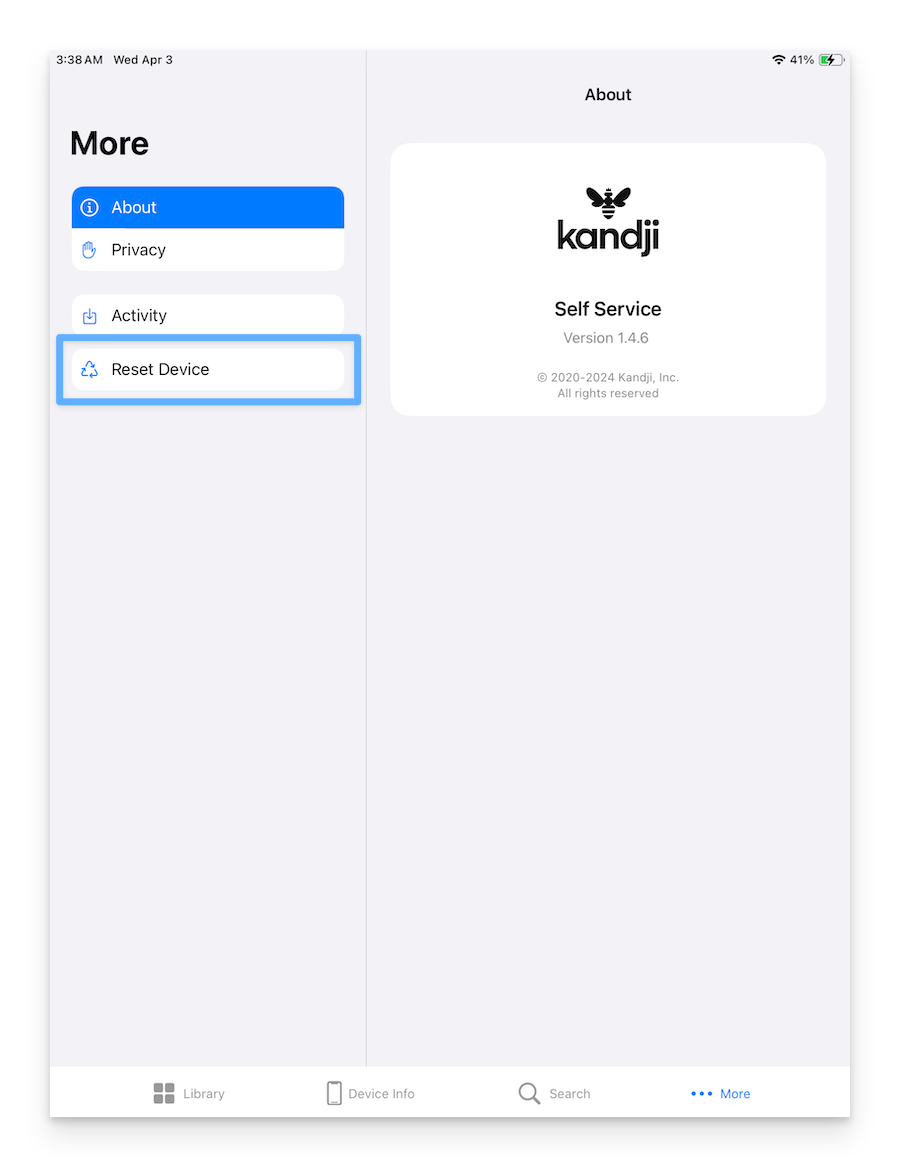
1
Enable Self Service Option
Under Options, check Add to Self Service.
2
Configure Wi-Fi Profile
Optionally, configure a Wi-Fi profile to allow the device network access after erase.

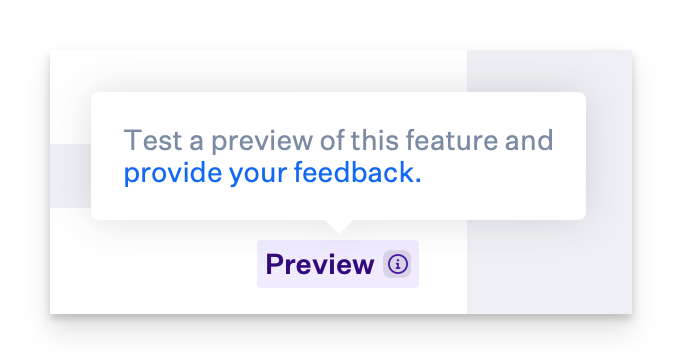
Return to Service in Self Service Considerations
- Cellular devices and devices connected via Ethernet do not require the Wi-Fi profile
- To ensure Wi-Fi payloads do not get orphaned on devices, only Wi-Fi profiles scoped to same Blueprint will show in the drop-down when selecting a profile; this includes Custom Profiles with Wi-Fi payloads
- Profiles that include a SCEP payload are not included
Opening Self Service
Users can find Self Service on their iPhone or iPad Home Screens.1
Launch Self Service
Tap the Iru Endpoint icon on your iPhone or iPad Home Screen to open the app.
2
Search for App
If you don’t see the app, swipe down from the top of the screen to reveal the search field and search for Iru Endpoint.
3
Configure Analytics
The first time you open Self Service, the Analytics and Crash Reports screen appears. Configure the settings as you wish, then tap Continue.
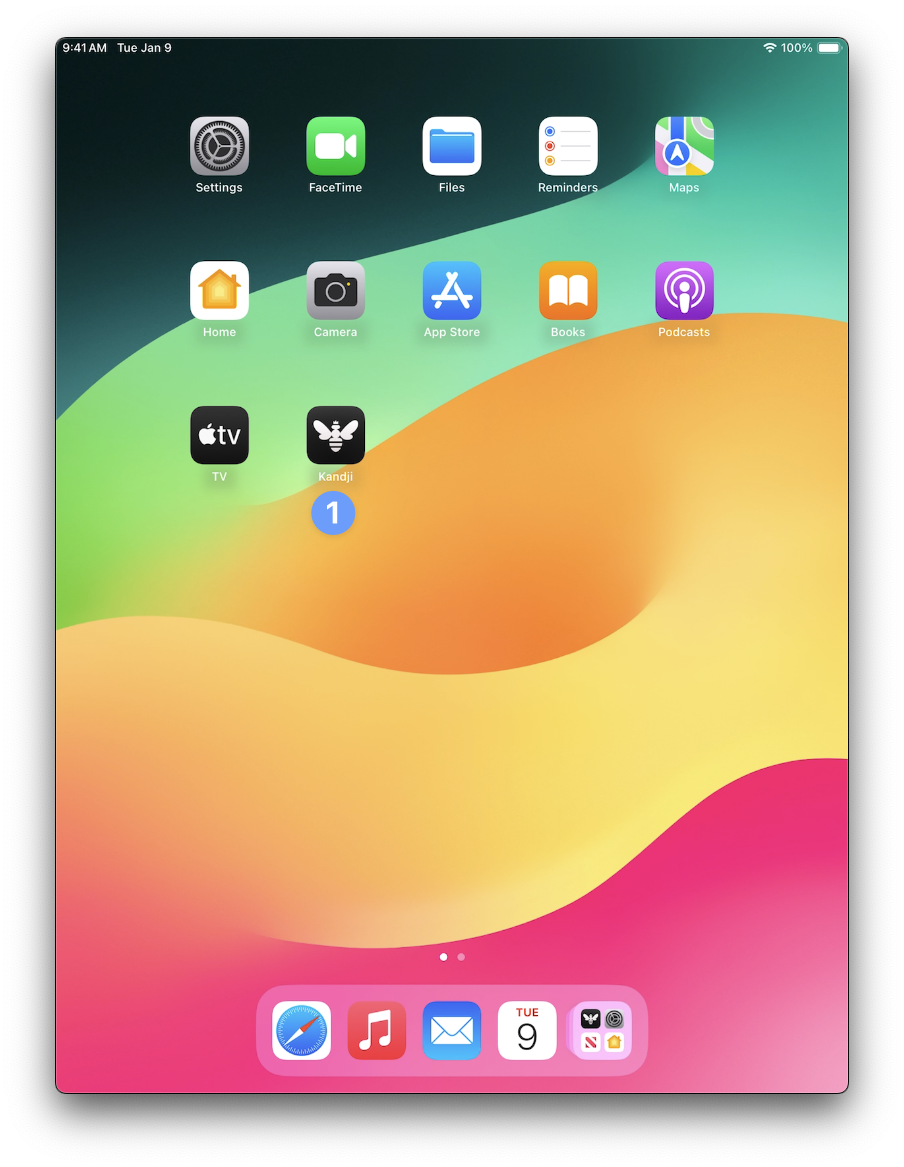
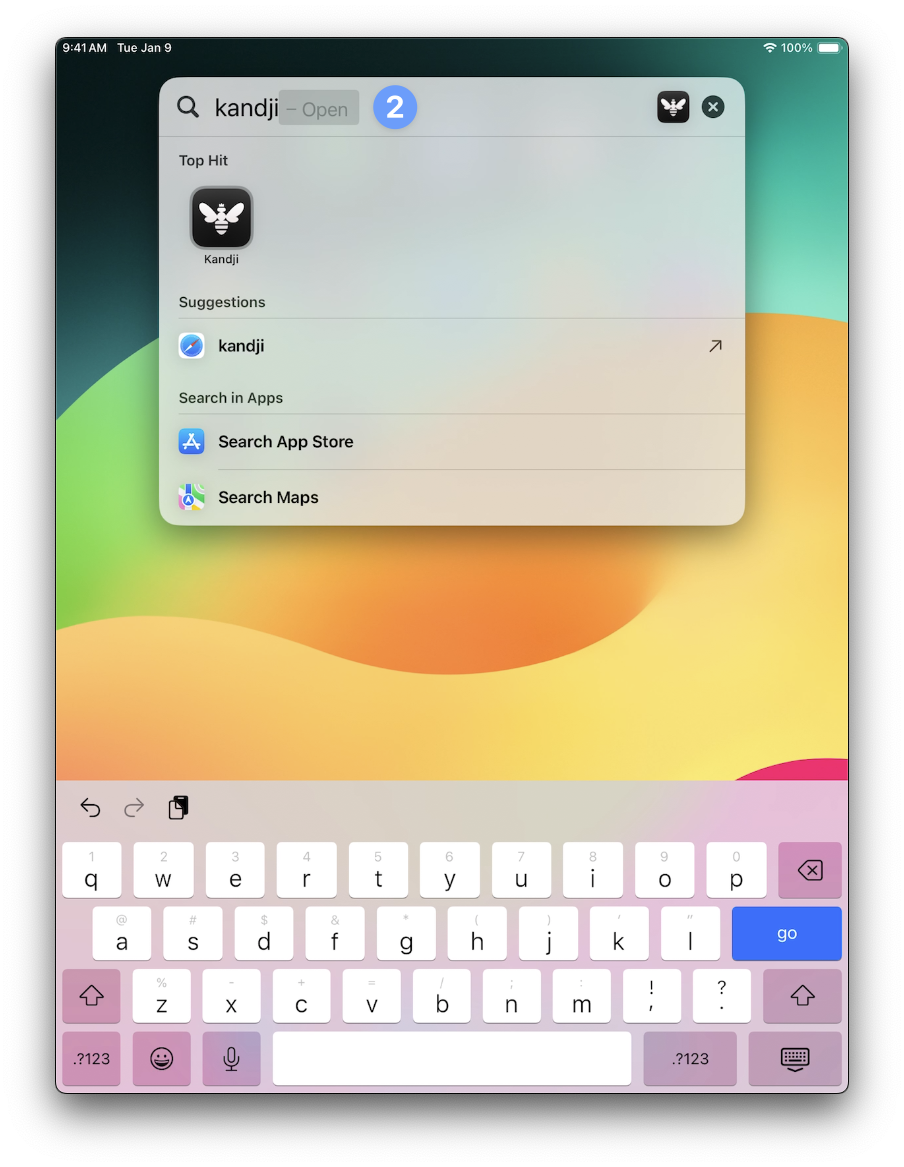
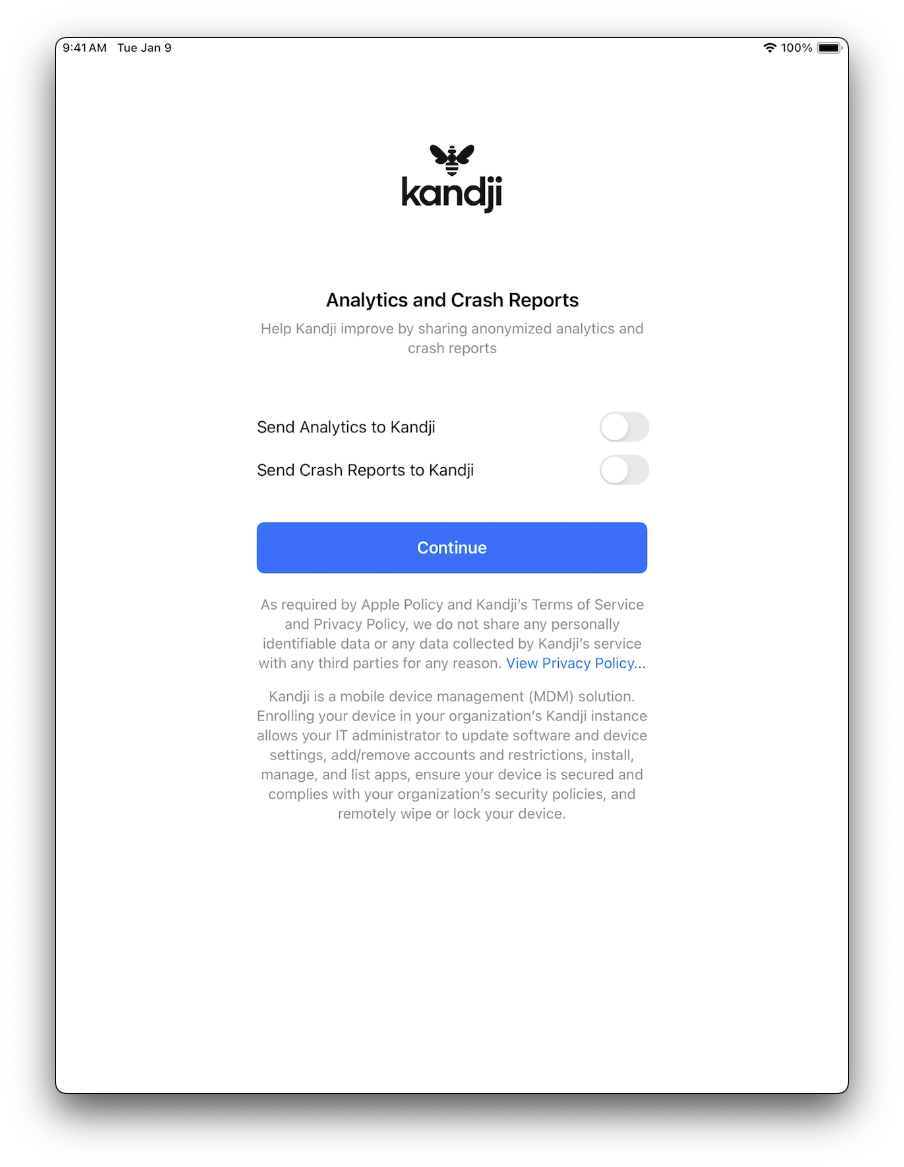
Navigating Self Service
Self Service has several tabs at the bottom of the screen and will automatically open to the Library tab—the primary screen that users will interact with.1
Browse Library
Within the Library tab, the All and Recommended categories are always displayed. Additional categories will automatically display, depending on how the admin has configured Self Service.
- Recommended: Displays items marked by the administrator as recommended
- All: Displays all items available in Self Service
- Admins can add categories in the Iru Endpoint web app by going to Settings > Self Service. A category will display on a device only if an app within that category is added to the Blueprint that the device is in
2
View Device Information
Access the Device Info tab to see useful information about the device, such as serial number, model, and installed OS version.
3
Search for Applications
Use the Search tab to search for and install any app available in Self Service.
4
Access Additional Options
Navigate to the More tab which includes an About screen (which displays the version information for the Self Service app itself), Privacy, and Activity. Open Activity to see previously installed app versions and the dates when they were installed.
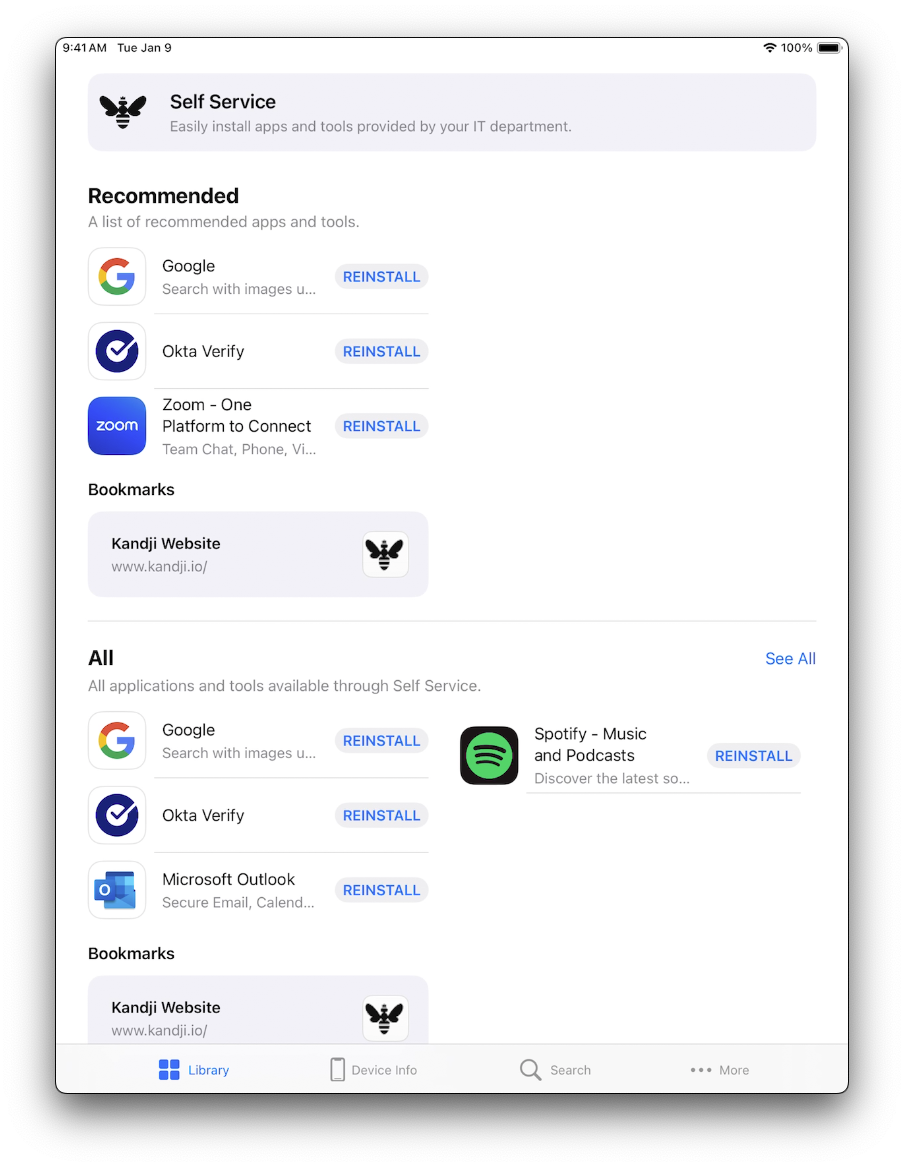
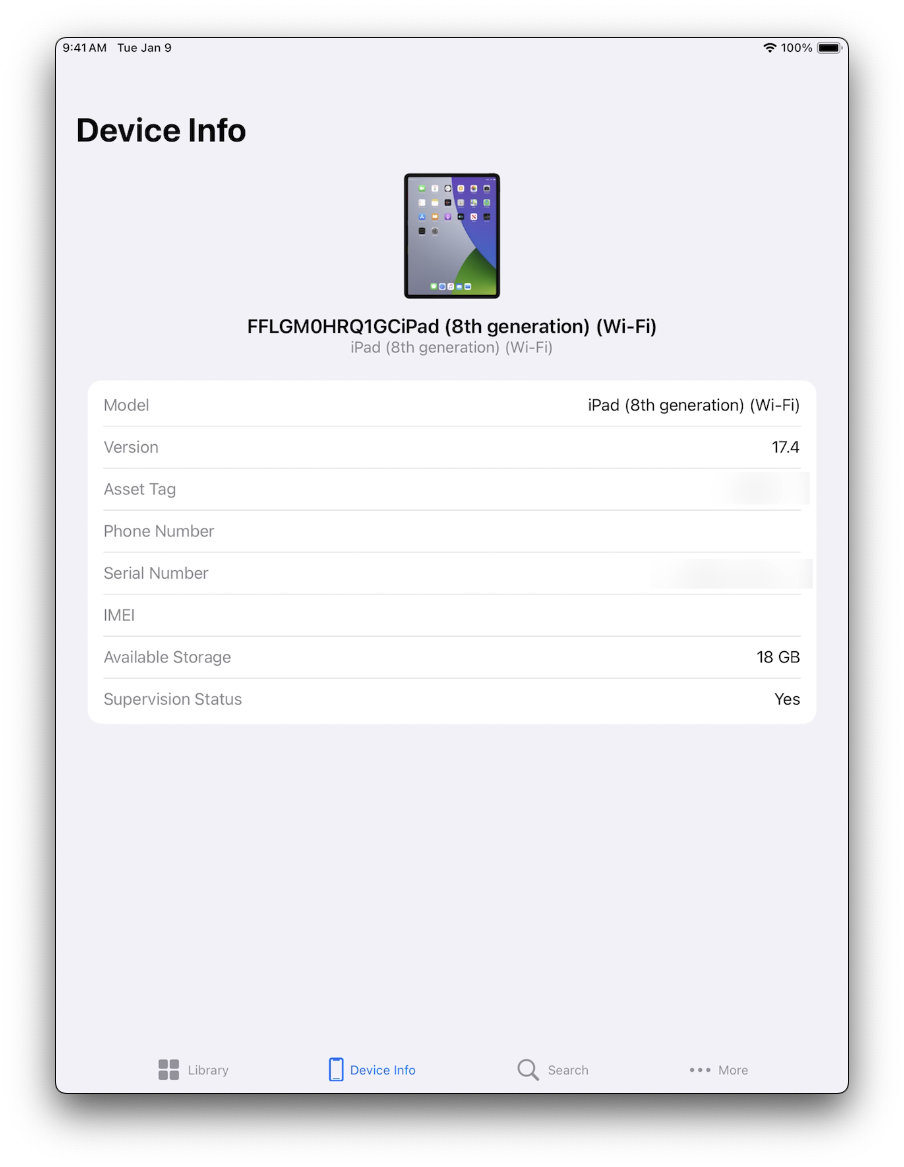
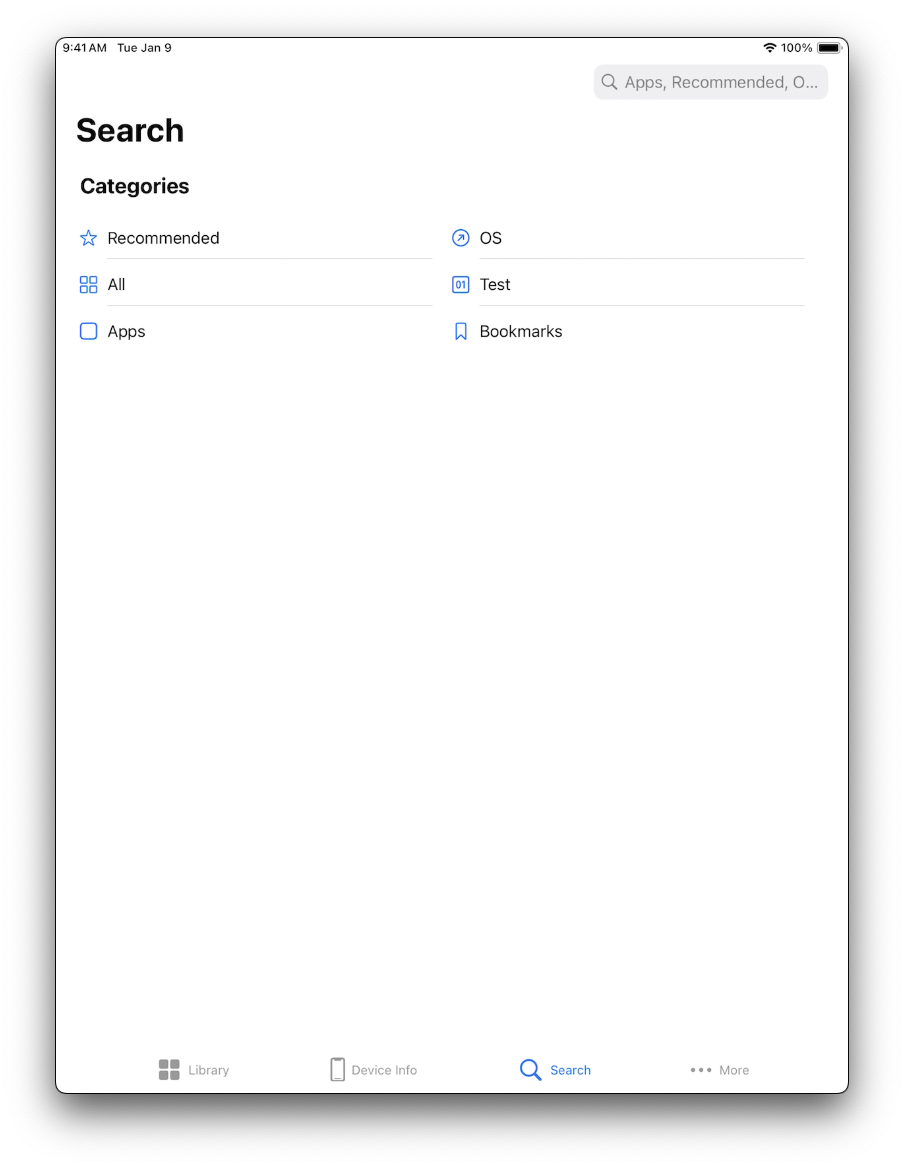
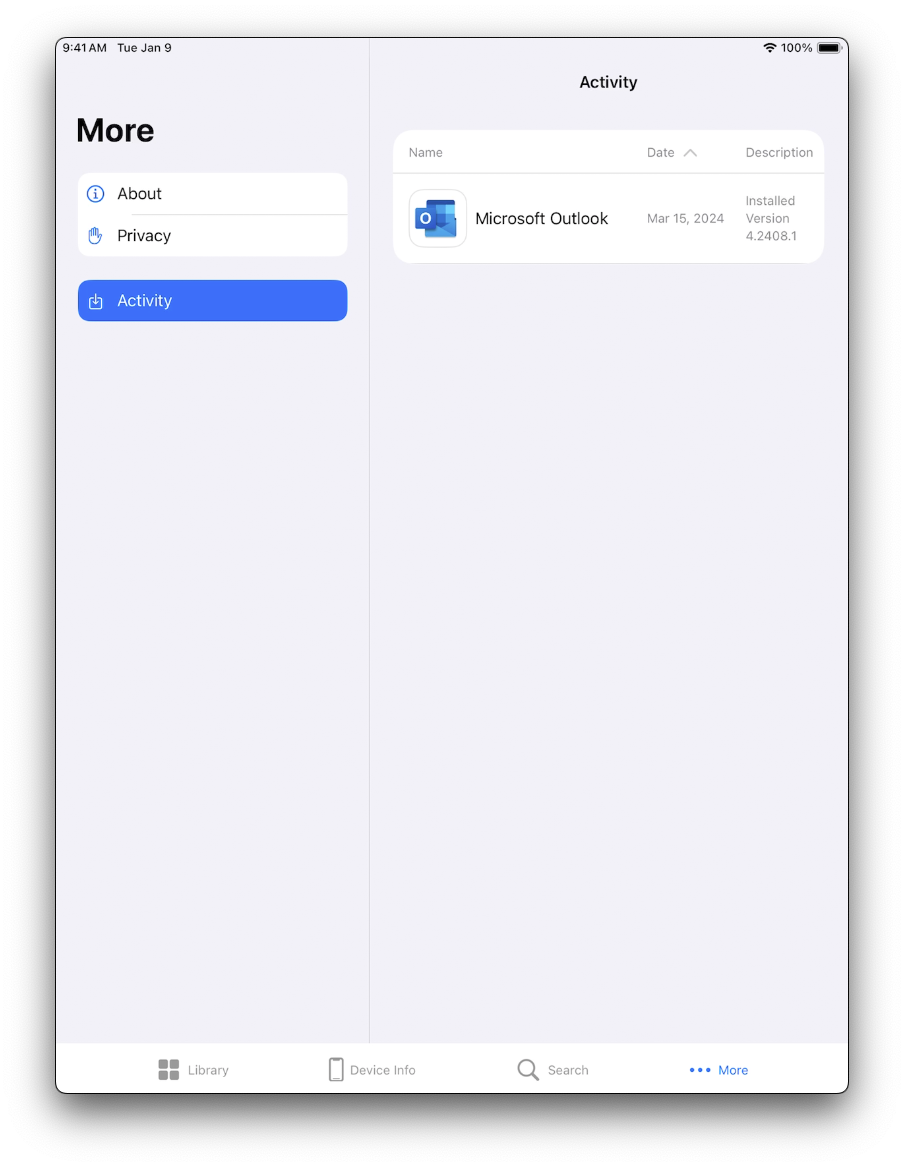
Installing Available Applications
Apps available for Self Service installation will display an icon, name, and description.1
Install Application
Tap Get to install the application from the Self Service Library screen.
2
Reinstall if Needed
After installing an app, the button will change from Get to Reinstall.
3
View App Details
Tap the app icon for additional information about the app.
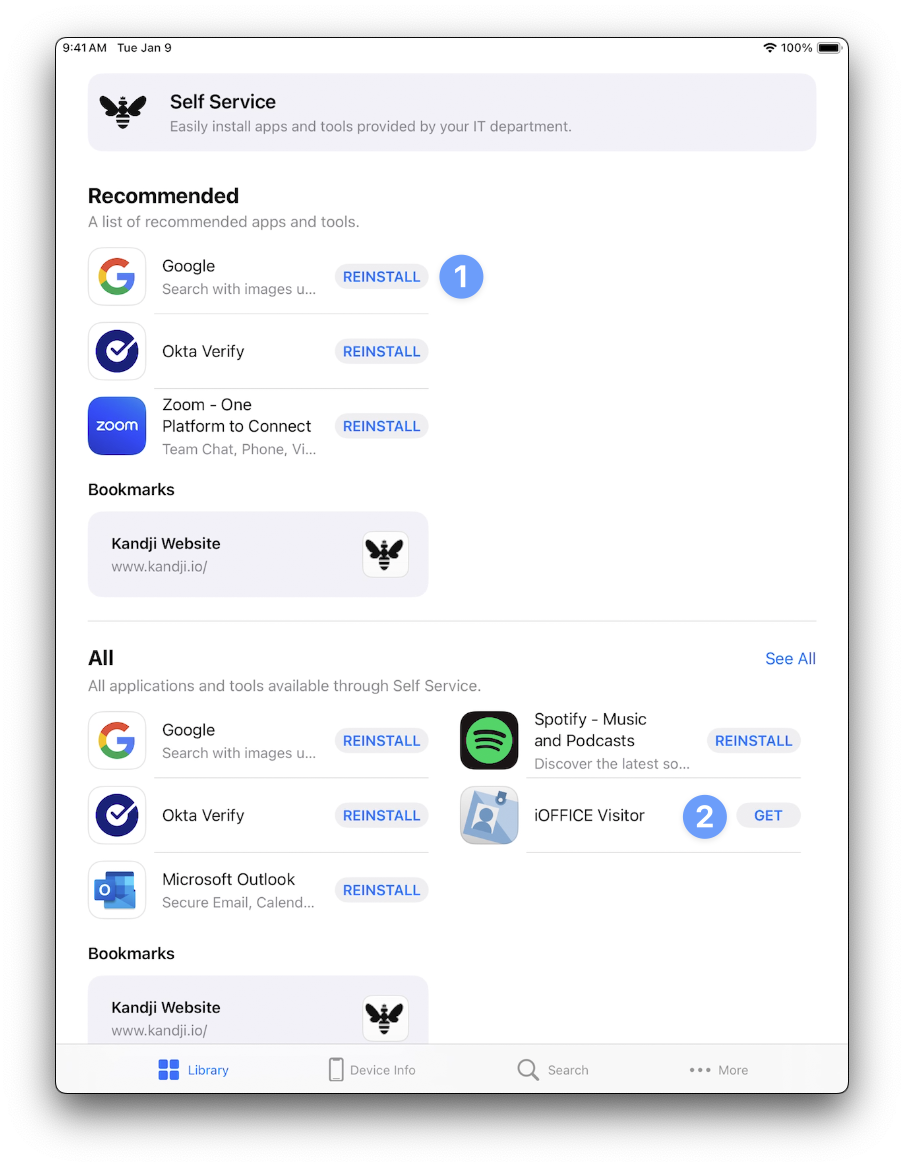
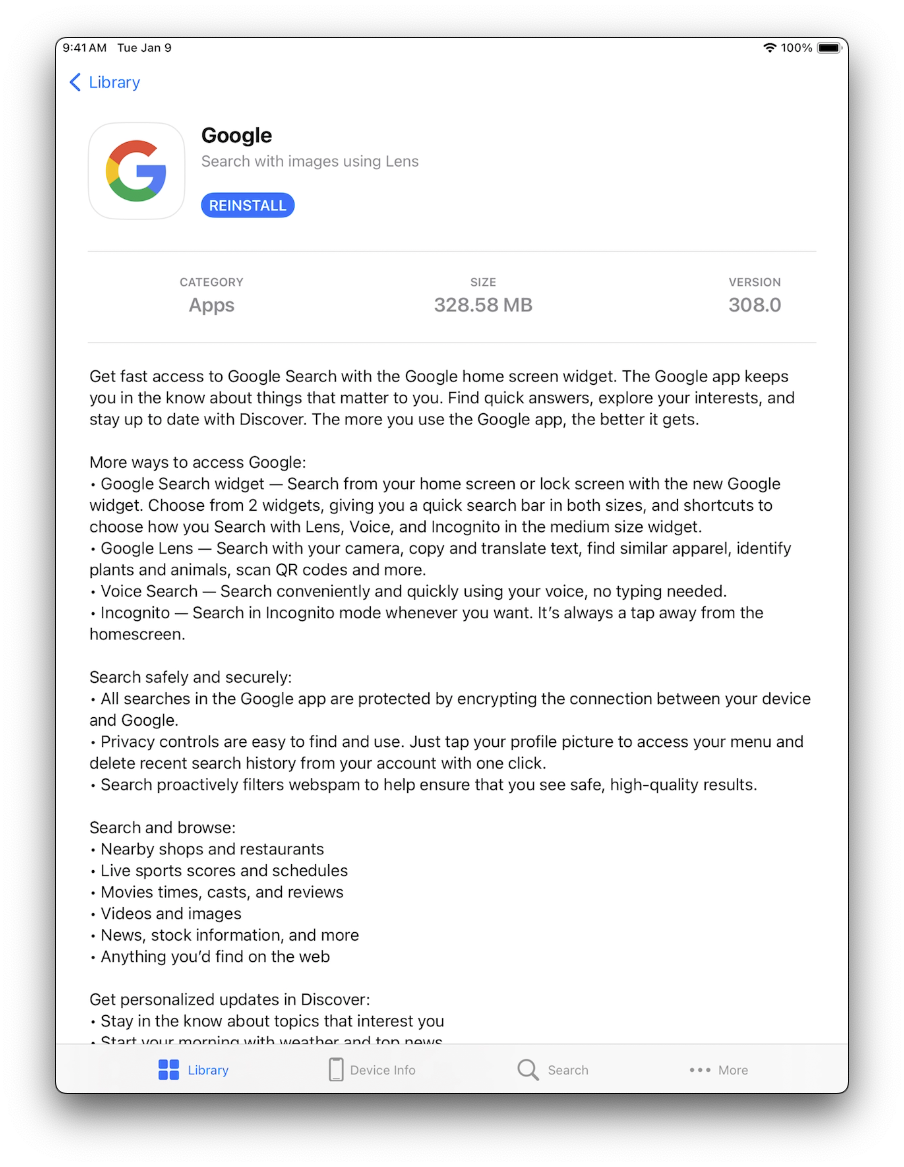
Considerations
- License Management: Ensure sufficient licenses are acquired from Apple Business Manager or Apple School Manager for all devices
- Automatic Installation: Self Service installs automatically on company-owned supervised devices
- User Consent: Users need to agree to install Self Service on devices enrolled through the Iru Endpoint Enrollment Portal
- Return to Service: Available for iOS and iPadOS 17+ devices, enabling automatic re-enrollment after device erasure
- Wi-Fi Configuration: Configure Wi-Fi profiles for devices that need network access after erase
- Category Management: Categories display on devices only if apps within those categories are added to the device’s Blueprint
- Search Functionality: Users can search for and install any available app through the Search tab
- Device Information: Access comprehensive device details including serial number, model, and OS version
- Activity Tracking: View previously installed app versions and installation dates
- Analytics Configuration: Users can configure analytics and crash report settings on first launch
- Home Screen Access: Self Service appears on device Home Screens for easy access
- App Management: Users can reinstall apps and view detailed app information
- Multi-Platform Support: Works across iOS, iPadOS, and visionOS devices
- Administrative Control: IT administrators can configure categories and recommended items through the web app





